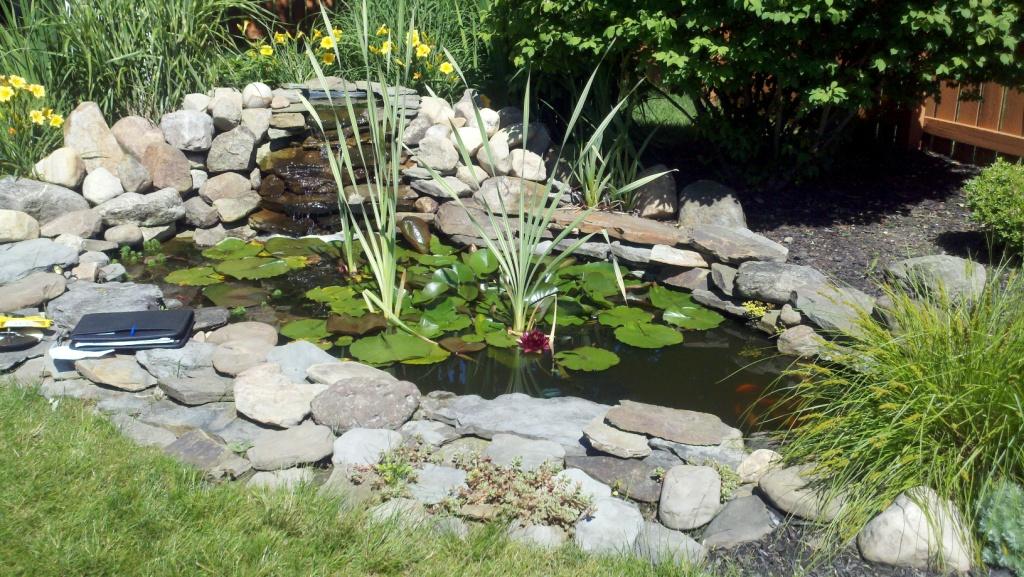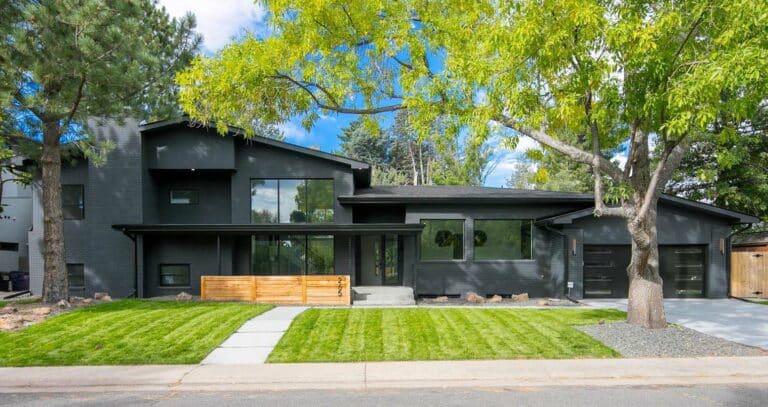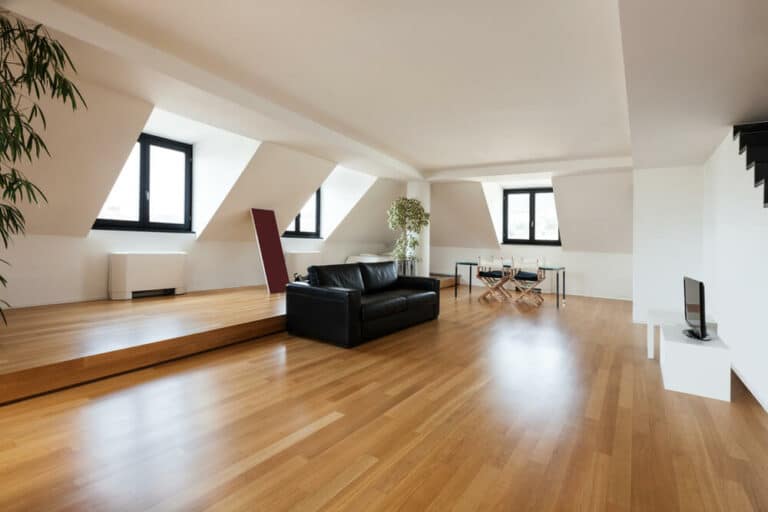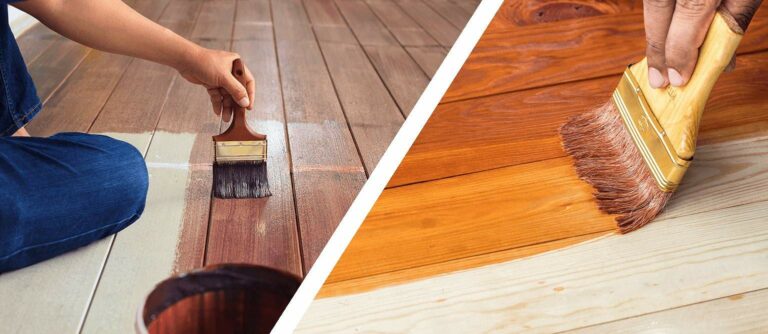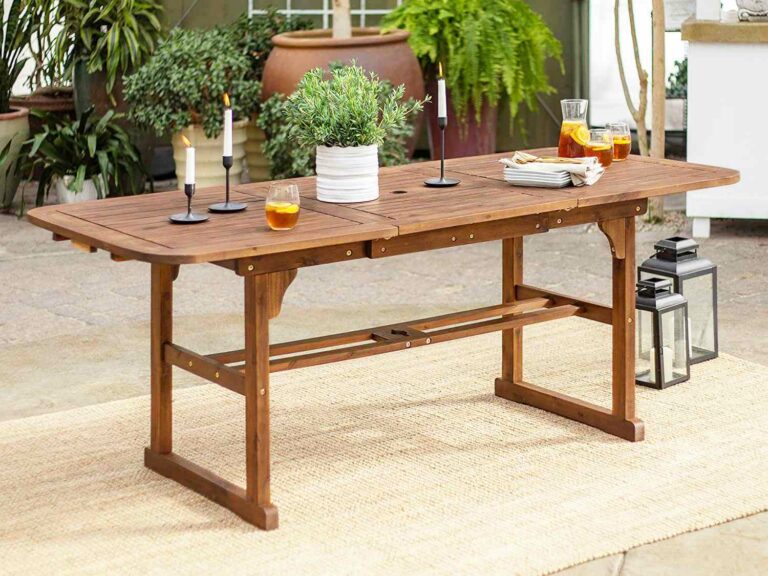Above Ground Ponds: How to Build One?
Do you like the idea of having a pond in the backyard but hate the tedious task of having to dig for it? We know digging your backyard for a functional pond can be a deal breaker for some. There is so much labor involved, and it can do a number on your beautiful backyard. Well, we have a solution; why not go for an above-ground pond?
Above ground ponds are a treat to behold in your backyard, and they are relatively easy to install. It is a little ecosystem you set up in your backyard, which adds so much personality and intrigue to that space.
You can introduce a variety of flora and fauna to it, from water liles to hyacinths and ducks to fishes.
Let’s guide you through the process of constructing your first above-ground pond.
1. Plan the Size and the Shape

We know that once you have decided on making an aboveground pond, you want to get right to the process and collect the materials. However, a crucial step before you take out your tools is to plan. Look at the size of your backyard, and get a rough idea of how big a backyard pond will be suitable for it.
The next step is deciding on the shape of the pond. Would you like a rectangular one or an elongated one, or perhaps a round koi pond? You can also go for abstract, more irregular shapes. We must warn you if you are a beginner and this is one of your first backyard ponds, go for a simpler shape. The more irregular the shape, the more effort it will extract from you.
2. Placement of Your Pond

Once you have decided on the shape and the size, it’s time to choose where you will construct this pond. The placement of the pond is important, and there are a few things you need to keep in mind.
- Choose a place that is visible from most points in your backyard. You don’t want to go through all the work of making a koi pond only for it to be ignored in some corner.
- Watch out for the trees. Placing your pond under a tree is not a great idea. You will be cleaning the debris of leaves and pollen every day. Not only that, the roots of the tree can puncture your pond and cause leakage.
- A backyard pond requires a water filter and pump to keep this ecosystem thriving. You would want to construct your pond at a place where you have access to a power source for them.
- Choose a place that receives neither too much sun nor is too shady. Too much sun can exacerbate algae growth, and too less of it will be detrimental to your water plants.
3. The Pond Structure
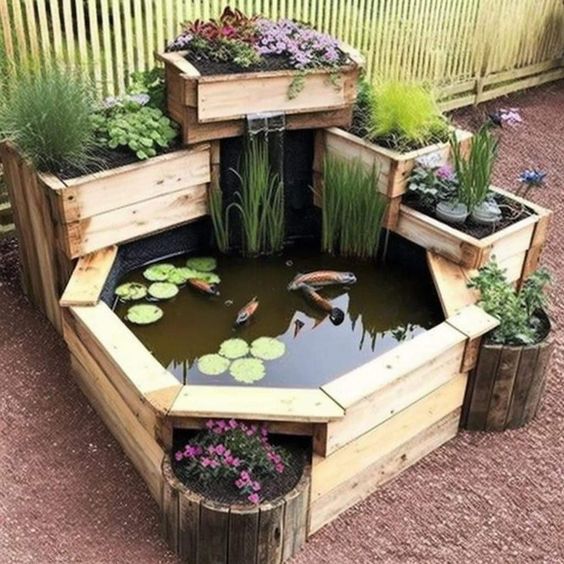
Here we have two options for you to make the structure of the pond:
Either you can construct a raised garden bed. For that, used lumber that has been pressure treated and raised bed corner brackets. Here make sure you buy good quality raised bed brackets. These brackets will hold the weight of the lumber, the pond, and the pressure of the water. You need sturdy brackets that will hold the structure together.
The next step would be to level the bed. This step is not essential; your pond will survive just as well if it is not perfectly leveled. But if you want the water to be at level with the top of the board, then leveling is a good step.
Dig the board on one side for leveling, or you might raise it a bit on one side by providing some foundation of boards or bricks.
The second choice is much easier. Instead of constructing the pond structure, you can just buy the raised pond kit. It will save you a lot of effort and time. Unless you like to build things from scratch, this is a good option.
Tip; you can construct the structure of the pond with the help of bricks or rocks too. Anything that is sturdy enough to hold the water pressure is great.
4. Pond Liner<

- You might have skipped leveling your pond, but this step is certainly not optional. You need to ensure that your pond is properly lined with a pond liner, or there is, for sure, a leaking hazard waiting for you in the future.
- This is also not the place to save money; you want to use a good quality pond liner. It must be sturdy, not prone to punctures, and appropriately flexible. If you are using something else, like a tarp as a pond liner, test it for any punctures before using it.
- Measure your pond and choose a slightly larger pond liner. You need the extra bit in case it needs some adjustments.
- Some of the common pond liners are PVC and EPDM
5. Lining the Pond

We mentioned that you should buy a pond liner that is slightly bigger than the measurements of your pond. This is where it will come in handy.
Drape the pond liner over the structure of the pond. Keep some of the pod liners hanging over the sides. As you begin to fill your pond with water, the pond liner will start to sink.
You need to fill the pond around to ⅓ of its volume. That should be just enough to weigh down your pond liner and allow it to sink to the bottom evenly.
While doing so, smooth out the folds of the liner to get a smooth surface. If your pond has some sharp edges, fold the liner carefully over them(see, you needed some extra liner). See if you need to make any other adjustments.
The pond liner will ensure that the water doesn’t leak into the ground, destroying your backyard pond.
6. Fill up the Pond
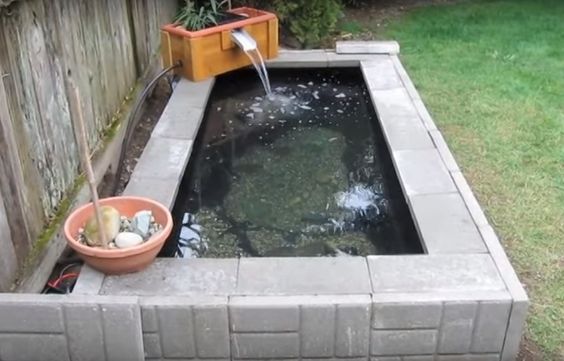
Now is the time to fill up the pond. As the pond is filled up, it will give you an idea of how well you have leveled it. If the pond is a little wobbly, don’t worry, those little adjustments can be easily done by using shims.
Once you are done with that, congratulation! You have created the basic structure.
7. The Pump and the Water Filter
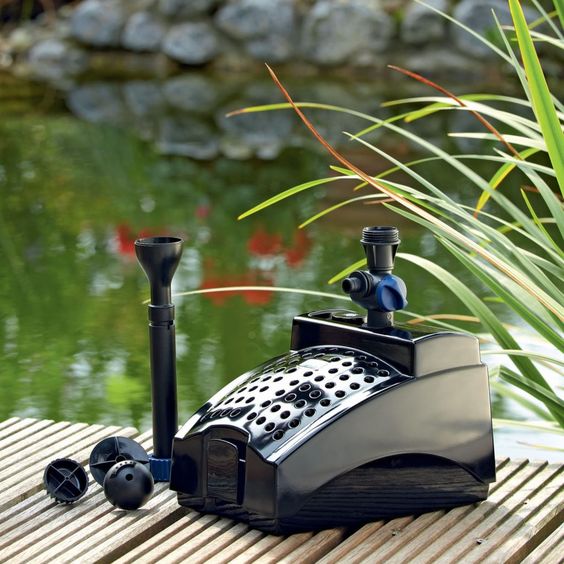
The choice of the pump and the water filter are important ones. These two ensure a healthy and thriving ecosystem for above ground ponds. They ensure enough oxygen supply for your plants and fish. They help keep the water clean and prevent excessive growth of algae. Needless to say, these are essential.
Choosing a water filter broadly depends on two things, and they are the size of the pond and how many fishes you are planning to introduce to it.
When it comes to the pump, you want a pump that has enough power to circulate the entire volume of the water in the pond at least once.
8. Introducing Fishes and Plants
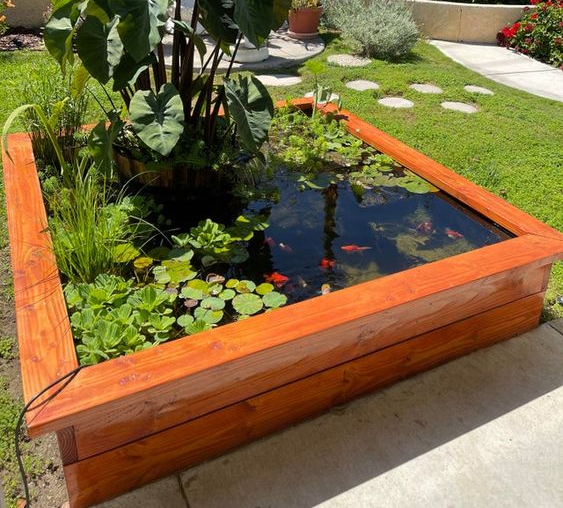
You’ve done all this hard work, and now is the time for the fun part(at least, we think it is fun).
Plants
- Above Ground Ponds need water plants; they ensure a healthy environment and are crucial to maintaining water quality. Also, why make a backyard pond at all if it’s going to be bare? Water plants look beautiful in a pond. Some of the more popular choices for water hyacinths are water lilies and Irisis.
- When introducing plants into your above-ground backyard ponds, there are a few things you should consider, like the depth of water, sunlight, and the size of your pond.
- It is always recommended to go for a diverse group of plants so that there is no nutrient imbalance. Go for submerged and floating plants of all kinds.
- Introducing more plants to your above-ground ponds also keeps the algae growth in check. They will compete for nutrition with the algae.
Fishes
- Above-ground ponds attract attention because they are small thriving ecosystems. Adding fish to your backyard ponds alleviates its beauty while helping maintain a balance in the ecosystem and keeping it fresh.
- When introducing fish to your pond, do that according to the size of the pond. You don’t want large fish packed in a small space. Besides that, you must look for the kind of fish that are compatible with the weather and your pond. One of the factors to consider for compatibility is the temperate of the water.
- Goldfishes are the more popular choice for backyard ponds. There is a reason for that, they are beautiful, and goldfishes are known to be pretty sturdy. They adapt to various conditions well.
- To ensure that your fishes survive, you should check the water quality. You can do that by getting a pond test kit. The recommended PH of water for thriving fishes is usually between 7.2 to 7.8.
- You can also increase the chances of survival of the fish by gradually acclimatizing them to the pond temperature.
9. Maintenance

Above-ground ponds require a bit of maintenance. Maintaining your backyard pond is important, or the thriving ecosystem you build will die down. Here are some ways to ensure your above-ground pond stays fresh
- Do not neglect cleaning the pond. Regularly remove debris like leaves, flowers, twigs, or any kind of waste from it.
- Regularly clean the filtration system, and keep it in check when you need to replace its parts.
- Overgrown above-ground ponds are just a nuisance, so trim your water plants to prevent overgrowth.
- Another overgrowth you need to control is that of algae. To do that, you can introduce other plants to the pond so they compete with the algae for nutrition hence keeping a check on their growth. Ensure that the pond doesn’t get too much sunlight and introduce some algae-eating animals like fishes and snails.
- Protect your pond from freezing over in the winter. It can be detrimental to the flora and fauna of the pond. One way to do that is by lining the base of the pond with compost. It ensures that the water temperature remains slightly higher throughout the winter.
Safety Tip; Use a cordless drill instead of one plugged in at the power source when working, or you can risk electrocution. You are working around water. It’s better to be safe.
Conclusion
Above ground ponds add to the grace of your backyard. They can add so much personality to your backyard. If you have a backyard pond, it will surely grab attention. Besides that, we can assure you it will be a very satisfying DIY project to undertake.
You can make it from scratch or get a raised pond kit and start from there. You have to ensure that your pond structure is properly lined with a pond liner. If not, you will risk the water seeping into the ground.
Introduction a variety of flora and fauna to your backyard pond to beautify it and to ensure a healthy ecosystem.
Remember, maintenance is important for above-ground ponds. Clean the debris and water filtration system regularly. In winter, try to prevent the freezing of the pond.
You are ready to build your above-ground pond. Just get started!

